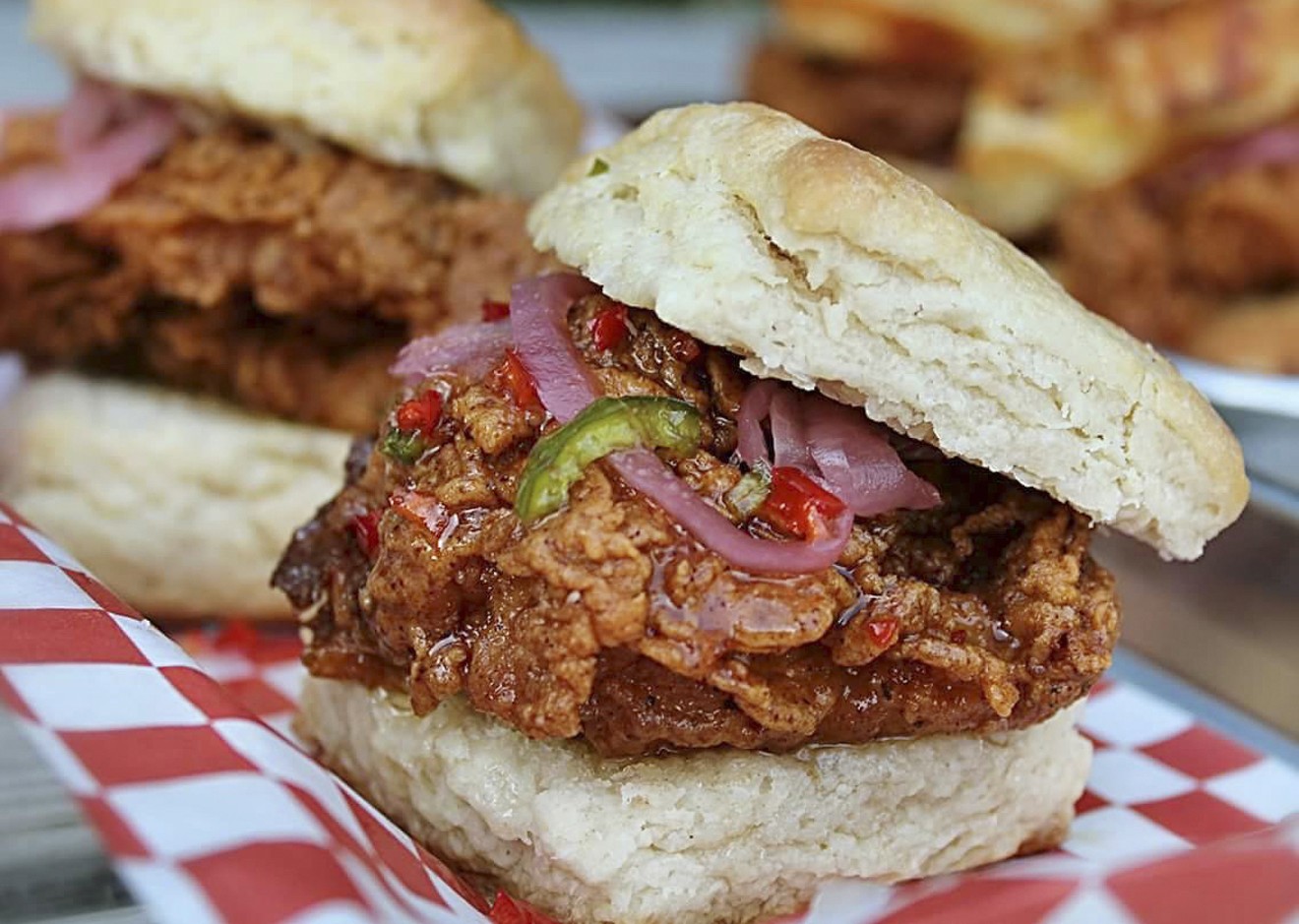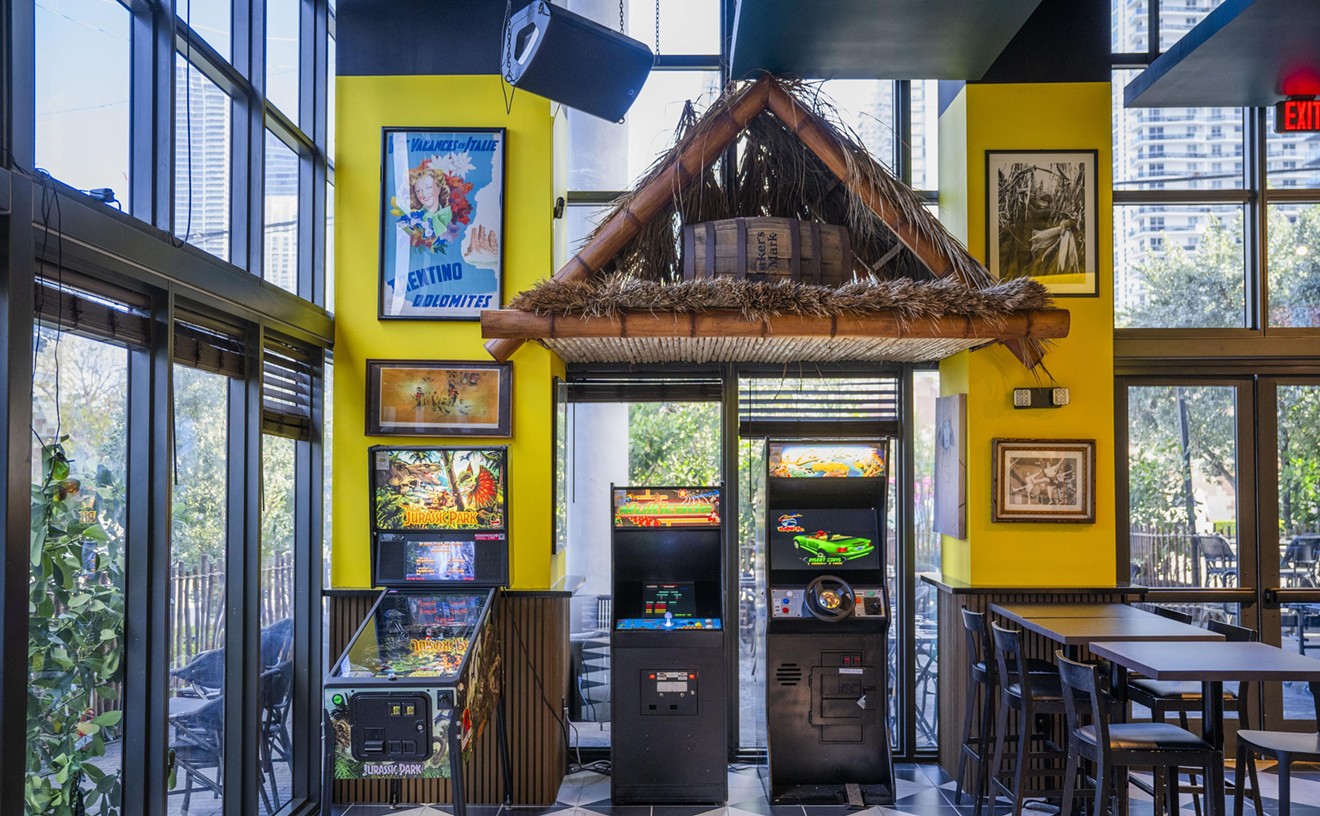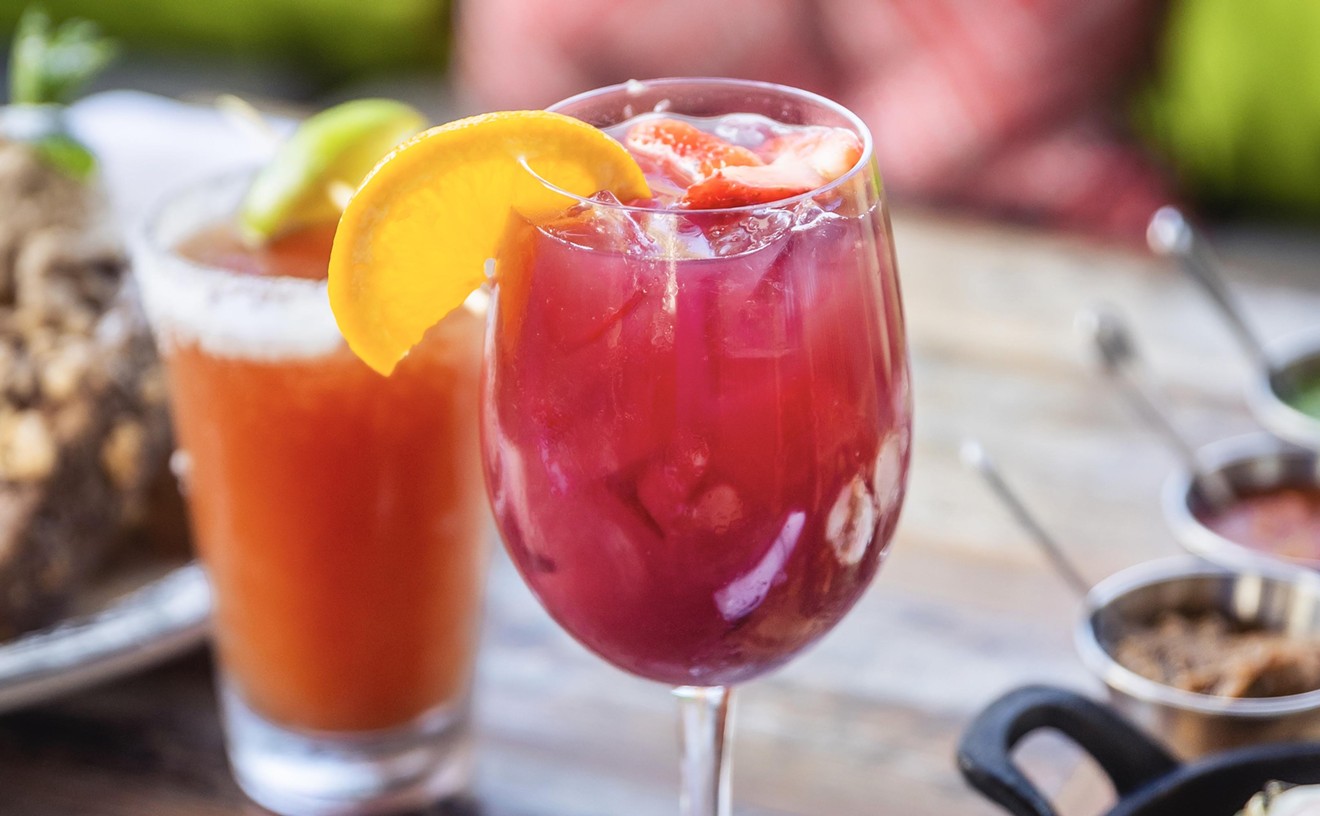On a cool Friday evening, music thumps through the Design District's $1.4 billion Palm Court as shoppers browse the shelves of the Dior, Versace, and Louis Vuitton boutique stores. A frenetic Latin-jazz band plays at the center of the outdoor square while stylishly dressed throngs scurry up an escalator toward the recently opened St. Roch Market (Palm Court, 140 NE 39th St., Miami).
Inside the 10,000-square-foot food hall are 12 distinct food and drink concepts. You can sample house-made Italian ravioli, wolf down a bowl of spicy ceviche, and slurp a few oysters on the half-shell. The idea is based on the successful flagship of the same name in New Orleans, and Miami's St. Roch has attracted customers well since it opened February 24.
The concept is rooted deeply in the Big Easy. An open-air market began operation on New Orleans' St. Roch Avenue in 1838, six decades before Miami was even incorporated. St. Roch Market was inaugurated there 40 years later. It was repeatedly remodeled and changed until Hurricane Katrina caused significant damage in 2005.
In 2015, two enthusiastic, bright-eyed entrepreneurs — Will Donaldson and Barre Tanguis — opened the place as a collection of restaurants under one roof. The pair had no culinary background but saw a shared market as an interesting business opportunity. It took about $3.7 million and three years to open a destination where 13 local vendors sold everything from creole hot wings to fried chicken and biscuits.
"We build it, and the chefs come," says Donaldson, a 35-year-old with light-brown hair and a short, scruffy beard. "They get to test their concept with minimal risk, and we get to create a space for a community with really interesting food and drinks."
A customer would be hard-pressed to spend less than $30 for a meal at St. Roch.
tweet this
Soon Donaldson and Tanguis set their sights on Miami. On a trip to the Magic City in 2016, they were introduced to Craig Robbins, a Miami real-estate developer who has been in the thick of transforming the once-abandoned Design District into an upscale center for fashion, food, and art.
"The Design District is a pretty giant beast," Donaldson says. "Craig has put together this unbelievably thoughtful curation of brands and concepts. Now he's doing a major push into food and beverage. It was the perfect time for us to open here."
In Miami, St. Roch is comparable to a high-end food court. Donaldson and Tanguis call it a reasonably priced dining option in one of the city's most expensive neighborhoods, where a couture outfit or a leather purse can cost $10,000. Unlike its more traditional New Orleans cousin, the space has a minimalist, industrial design. It's lined with black subway tiles and accented with marble countertops, gold light fixtures, and midcentury modern tables.
Each of the 12 food stalls requires diners to place an order, find a seat, and await a text message alerting when the order is ready for pickup. The process usually takes about 15 minutes.
You might want to start with a drink before dinner here. New Orleans mixologist Derek Brumfield, a vet of the Crescent City's Tiki Tolteca, is responsible for the Mayhaw, which servesa range of drinks, including tiki cocktails made with fresh juices and mixers. Worth a try is the Cantarita, blended with tequila, grapefruit, habanero, and a spritz of lemon ($12). The bar also offers a 55-label wine list stocked with rosés and sparkling wines. Located in the center of the space, it is the focal point of the market, surrounded by the remaining 11 food stalls.
Next, try Dal Plin, a charming Italian concept from Fort Lauderdale created by Massimo and Elisabetta Tundo, a married couple from Milan. They offer made-from-scratch pastas and pastries, including ricotta gnocchi, risotto, meaty lasagna, and ravioli in a white truffle sauce. The gnudi toscani stands out: Four gnocchi-like spinach dumplings are made from a ricotta cheese base instead of potato, resulting in a light and pillowy texture; they're drizzled in a creamy white sauce ($15).
Coop, a Southern-inspired spot by brothers Robert Ruben and Giancarlo Rodriguez, best known for their Bar Bites at Hollywood's Yellow Green FarmersMarket, serves soul food such as buttermilk biscuits with candied-bacon butter ($13) and 25-hour-brined fried chicken served on a cheddar-chive waffle ($18). The fried chicken is incredibly juicy, pleasantly crunchy, and satisfying. The biscuits are warm, doughy, and accentuated with a sweet butter served on the side ($6). There's also a toothsome Gorgonzola mac 'n' cheese infused with bacon and crusted with walnut, but the filling dish might curb your appetite for other concepts.
Check out Elysian Seafood, which was founded at the original St. Roch and serves delicious crab cakes doused in a charred scallion cream for $14 to $24. Or sample the fare of Miami-born, Alinea-trained Andrew Zarzosa at Yuzu, where you can get four petite foie gras dumplings in a light citrus, ginger, and yuzu shoyu sauce for $12. Or perhaps try Fernando Chang's Itamae, an Asian-Peruvian concept where sashimi and nigiri are spiced with Latin ingredients such as leche de tigre and ají amarillo. Combos include nigiri, sashimi, tiradito, and a roll range from $18 to $24.
Toward the corner of the hall, near a color-coordinated bookcase, find Chef Chloe and the Vegan Cafe. It's owned by Chloe Coscarelli, who rose to fame as the first vegan chef to win Food Network's Cupcake Wars. At St. Roch, she offers a small menu of vegan bites. On a recent visit, the café offered only five choices, including a single slice of avocado toast drizzled with truffle aioli and sprinkled with edible flowers ($7), and four handheld rainbow rolls stuffed with sesame tofu, kelp noodles, avocado, and mango ($8). The heaviest item — a bowl of nachos drizzled with butternut queso, guacamole, and honey-sriracha seitan — is as satisfying as a meaty equivalent. The vegan desserts, the true gems at St. Roch, include sea salt chocolate chunk cookies, chocolate strawberry cupcakes, sprinkle doughnut holes, and frozen matcha served in a coconut bowl ($2 to $6.50).
St. Roch is just the latest addition to the Design District, which is on the cusp of becoming a mecca for Miami culinary royalty. The neighborhood will soon be home to Kaido and Ember, a Japanese cocktail lounge and a wood-fired American Bistro by Alter's Brad Kilgore; Jean-Georges Vongerichten's ABC Kitchen; and Joël Robuchon's L'Atelier. Soraya Kilgore recently debuted MadLab Creamery, serving cotton-candy-topped soft-serve and Japanese cheesecake, and chef Niven Patel's wildly successful Indian restaurant in Dadeland, Ghee, opened an outpost in the neighborhood as well.
But St. Roch doesn't yet meet the standards of these places. It's a far cry from the kind of glamour on which the Design District prides itself.
Though the food is tasty, the experience leaves patrons with restaurant-style pricing in a cafeteria atmosphere that lacks the luxury of wait service. Despite Donaldson and Tanguis' sales pitch that their concept is cheap, a customer would be hard-pressed to spend less than $30 for a meal at St. Roch, not including tip or adult beverages.
St. Roch might be the Design District's attempt to cater to all Miamians rather than only those who can afford a $2,000 pair of shoes, but so far it hasn't achieved that goal. The question remains whether the city as a whole will buy into this food hall, especially when cheap tacos and burgers are available less than a mile away in Wynwood. In New Orleans, Donaldson and Tanguis recently opened a second hall about four miles from the first. Let's hope they can repeat that success in Miami.












